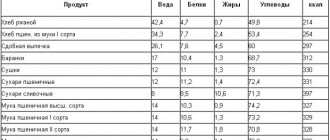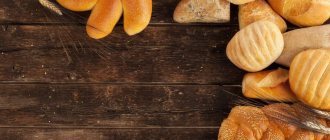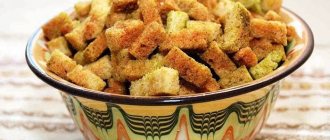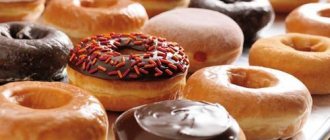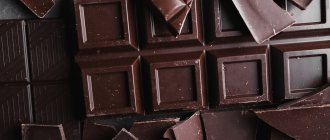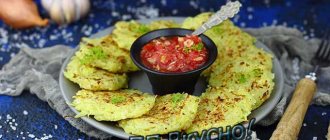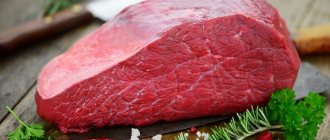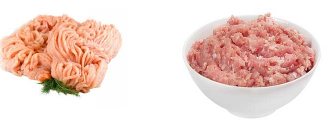Black or rye bread is not only tasty, but also healthy. It is prepared from rye flour, rich in vitamins, minerals, macro- and microelements, and fiber. Nutritionists advise including rye bread in diets - the calorie content of 1 piece is only 150 to 200 kcal. The variety of varieties will allow you to choose a delicious option for breakfast, dinner, lunch and for light snacks: they produce black bread with seeds, nuts, honey, herbs, malt, berries, bran, onions, dried fruits and even garlic.
Composition and nutritional value of black bread
The traditional recipe for making black bread includes the use of rye flour and sourdough, which is characterized by a high content of lactic acid bacteria. Yeast-free is more beneficial because yeast is a protein that oxidizes the gastric environment.
The benefits of rye bread for the body are explained by its composition. Vitamins and minerals are involved in metabolism, fiber improves digestion and cleanses the intestines, complex chemical compounds and macroelements prevent the development of heart disease, cancer (including breast cancer), atherosclerosis, and hypertension.
100 grams of black bread contains:
| Carbohydrates | 48 g |
| Water | 37 g |
| Squirrels | 8.5 g |
| Cellulose | 5 g |
| Fats | 3.5 g |
| Ash | 2.5 g |
| Sugar | 4 g |
The finished product contains no cholesterol and trans fats, which is useful for dietary and therapeutic nutrition.
Vitamin and mineral composition
Rye and wheat contain almost the same amount of nutrients, but after processing, rye flour is richer in nutrients. If black bread is prepared with sourdough, then it retains more valuable substances, but with yeast it turns out to be cost-effective and easier to make, but less healthy.
1 piece of black bread contains B vitamins, which are involved in metabolic processes, the functioning of the nervous and cardiovascular systems, regulate fat, protein and carbohydrate metabolism, and stimulate the production of hormones. Deficiency leads to nervous breakdowns, chronic fatigue, depression and diseases of the endocrine system. Fat-soluble vitamins are represented by groups C, E, K and beta-carotene.
The chemical composition contains:
- saturated fats: stearic, myristic and palmitic acid;
- monounsaturated fats: oleic, gadoleic and palmitoleic acid;
- polyunsaturated fats: linolenic and linoleic acid;
- essential amino acids: leucine, methionine, threonine, histidine, tryptophan, lysine, etc.;
- replaceable: alanine, aspartic, glycine, proline, etc.
Of the macroelements, the product contains sodium, phosphorus, calcium and potassium, and of the microelements - copper, selenium, zinc, iron, manganese.
Fresh or fried black bread (without butter) meets the body's daily requirement for selenium by 56% and sodium by 46%. And the presence of copper stimulates the absorption of proteins and improves the supply of oxygen to tissue cells.
What do we eat under the guise of bread?
It is unlikely that when a person buys and eats bread, he thinks about its mineral and vitamin composition. This product is an essential attribute of everyday and holiday meals. True, supporters of a healthy diet are picky about their choice. They eat wheat bread less often, preferring rye or grain baked goods.
Component composition:
- calcium;
- thiamine;
- selenium;
- choline;
- riboflavin;
- potassium;
- pantothenic acid;
- magnesium;
- iron;
- tocopherol;
- pyridoxine;
- zinc;
- folic acid;
- calcium;
- niacin equivalent;
- phosphorus, etc.
Almost 50 g out of 100 are carbohydrates. Wheat bread contains both fats and proteins.
On a note! To enrich your vitamin and mineral reserves and improve your health, without the slightest harm to your figure, you should consume no more than 50 grams of bread per day, that is, a couple of slices.
Calorie content of rye bread
The calorie content of black bread depends on the cooking recipe, additives, flour, and the presence of yeast or malt. Traditional rye bread (100 g) has only 182 kcal, and is made from sourdough, flour, salt and water. Depending on the variety, manufacturers use peeled or wallpaper flour, whole grain, finely ground.
How many calories are in a piece of rye and rye-wheat bread:
- Stolichny - 210 kcal;
- Darnitsky - 200 kcal;
- Borodinsky - 208 kcal;
- Belarusian - 210 kcal;
- Rizhsky - 230 kcal;
- from peeled flour - 185 kcal;
- from wallpaper flour - 180 kcal;
- yeast-free - 150 kcal.
The difference in calorie content is explained not only by different amounts of flour, yeast, malt, but also by the addition of molasses, spices, bran, etc. to some varieties.
With bran
Bran is often added to bread because it:
- improve intestinal function;
- remove harmful cholesterol, toxins and allergens from the body;
- strengthen the immune system;
- serve as an additional source of fiber, vegetable protein and vitamins;
- improve nutrient absorption;
- reduce cholesterol levels;
- increase hemoglobin.
The calorie content of rye-wheat bread with bran is about 214 kcal (100 g). Nutritionists recommend consuming this bread to prevent atherosclerosis, gastrointestinal diseases, obesity, allergies, skin or hair problems, and fungal diseases.
With bran and seeds
The calorie content of rye bread per 100 grams is 295-305 kcal, depending on the composition and amount of additives. The advantage of the product is that it can be eaten for breakfast or second breakfast with tea: the rich and full-fledged taste does not require the addition of butter, cheese or pate, which allows you to reduce calories and maintain a slim figure.
Adding nuts, seeds and bran to the dough reduces the dietary quality of bread, since they contain a large amount of fat. When preparing, sunflower, flax, pumpkin or sesame seeds are used, and buckwheat or wholemeal wheat flour is often added. This bread turns out fluffy and aromatic, and allows you to get a greater variety of flavors.
With butter
Oil with reduced fat content contains 552 kcal per 100 g, and fatty oil - up to 720 kcal. How many calories are in rye bread and butter depends on the nutritional value of these two products, as well as thickness and weight. Thus, an average piece of Borodinsky bread contains 205 kcal, and Finnish bread contains 120 calories. The calorie content of 1 piece of Borodinsky with butter is 285 kcal (40 g of bread and 5 g of butter).
How many calories are in black bread with butter and cheese (classic bread without additives) - 308 kcal, and the calorie content of unleavened bread with butter is about 200 kcal.
How many calories are in black bread - 1 piece: with butter, with cheese, can you eat it while on a diet?
There are very few calories in 1 piece of the product - per 100 grams of the familiar Borodinsky there are only 208 calories. How much energy value is found in other, more exotic varieties can be seen from the list below: 1. “Darnitsky” - 206. 2. “Ukrainian” - 198. 3. Whole grain from rye flour with malt - 198.
These are the most “dietary” types of product with the lowest fat and carbohydrate content. There are other varieties of the popular product with a higher content of microelements, which not only affect the deposition of fat reserves, but also charge a person with energy. These are yeast-free, rye and gray.
Their preparation involves wholemeal flour, which slows down the process of breaking down starch from raw materials in the body.
Important!
A healthy product is obtained only from first-grade coarse flour. It contains much more useful microelements that our body really needs. Excellent butter products are produced from the highest grade raw materials, which mainly contain only starch and nitrogenous compounds. They, in turn, are deposited on the sides with additional folds. Thus, no matter how many calories there are in 1 piece of black bread, it is much healthier than a wheat product made from refined flour.
How does the composition of a product change with additives?
When calculating the calorie content of lunch or breakfast, you should take into account the weight of 1 piece of black bread; it fluctuates around 40 grams. An important point in such manipulations remains the presence of seeds or grains and how many calories they add to a standard product.
If, in the process of calculating your diet, you want to eat a sandwich with butter, the energy value of a slice of black bread increases by 47 calories. In this case, the additive layer should not exceed a weight of 7 grams. The number of calories from a piece of cheese weighing 18 grams also increases. With this addition, the sandwich will become even “heavier”, adding 62 calories to the diet.
And considering that one sandwich is not enough for a person who is used to eating a lot, the weight of what is eaten increases proportionally.
Important!
Brown bread should not be eaten by people with high acidity and gastritis, ulcers and other problems of the gastrointestinal tract. In addition, the product is not a main component of various diets, so it should be limited if you are overweight. Thus, 1 piece of black bread will not only replenish your energy supply for the whole day, but will also help you more easily endure significant dietary restrictions. Knowing how many calories it contains, it is easier to distribute physical activity during active training. Therefore, black bread can be safely consumed with butter or cheese, without exceeding the amount of this useful additive in the diet.
Options with breadcrumbs
Contrary to the advertising slogans of marketers, the calorie content of 1 piece of black bread does not decrease due to drying it. No matter how much manufacturers describe in their booklets the benefits of this type of product, in reality it is no different from fresh baked goods. This fact applies to all types of bread, because when dried, the amount of starch in it remains the same.
Neither fats nor carbohydrates leave such a product, and in combination with preservatives and flavoring additives, crackers become a very dubious replacement for a regular product. Fried types of crackers are even less dietary. Their production involves margarine, vegetable oils of dubious quality and oil-containing substitutes.
Instead of being beneficial and reducing your waistline, such food products bring a whole bunch of health problems: • exacerbation of diseases of the gastrointestinal tract; • additional stress on the kidneys and liver due to chemical additives; • disruption of intestinal function due to an excess of dry substances, and so on. The calorie content of homemade croutons often exceeds 40 kcal. per 100 grams of finished product.
And this is a quarter of the daily norm for an adult working person. As we see, wheat bread, which was considered a privileged food by our ancestors, has long become a “harmful product” for modern people. Whereas 1 piece of black bread, considering how many calories it contains, will not bring any special problems, even if you make a sandwich with butter or cheese out of it.
Therefore, a small amount of the product can and should be eaten with any diet. Posted by: Anaid [Offline]
Beef liver in sour cream with onions
- beef liver; - salt;
– black or fragrant ground...
Meat zrazy with egg and cheese in the oven
– minced turkey; - egg; - tomato;
- onions...
Source: https://dieta-prosto.ru/b834/Skolqko_kalorij_v_1_kusochke_chernogo_hleba
Calorie content of rye crackers
How many calories are in 1 rye cracker depends on the amount of additives and oil. The pure product has about 30 kcal (330 kcal per 100 g of product). If crackers are prepared with cheese, pepper, butter and other flavorings, then the calorie content of 100 g of product increases to 450 kcal.
Rye crackers prepared without adding oil are a dietary product. It is recommended to eat them instead of fresh bread if you tend to be overweight: crackers have low calorie content, a pleasant taste and satisfy hunger well. If drying takes place in compliance with all the rules, then the crackers retain all nutrients and minerals. Another advantage is that they are more beneficial for the body, because... contain a lower percentage of stickiness.
The harm of rye bread in the form of ready-made store-bought crackers can manifest itself in the development of diseases of the intestines, stomach, and urinary system. This is explained by the presence of concentrates, fats and chemical additives. This product is contraindicated for people with peptic ulcers, obesity, and diabetes. Excessive consumption of crackers with a high content of concentrates leads to disturbances in carbohydrate metabolism, rapid weight gain, and indigestion.
Calorie content of croutons
How many calories are in a piece of black toasted bread depends on the type of preparation: garlic croutons have about 300 kcal, croutons with garlic and cheese are more nutritious - 350 kcal.
Croutons differ from croutons in their preparation technology: the bread is soaked in eggs and milk and fried in a small amount of butter. You can also use a toaster or electric sandwich maker for toasting. This option is healthier because it does not require the use of animal or vegetable fats.
Usually they use a loaf that is two or three days old. Additionally, you can add sugar, salt, black pepper, paprika, turmeric or ground garlic to the milk for taste, and sprinkle the finished sweet croutons with powdered sugar.
Which bread is harmful to the body?
The most dangerous loaf for the body is made from refined wheat flour.
After factory processing, it is completely deprived of all beneficial properties and retains dangerous components for a long time, such as potassium bromate, quickly digestible carbohydrates, benzoyl peroxide, chlorine dioxide, alloxan and ammonium persulfate.
This provokes excess weight gain, weakens the body’s defenses, worsens overall health, and reduces immunity. In some cases, the situation can lead to the occurrence of oncology, limited intake of fatty acids and tocopherol, which are vital for the body, the entry of carcinogens into the body, and the deactivation of many enzymes.
Calorie content of white bread
Wheat or white bread is less healthy. Excessive consumption can provoke a deterioration in the condition of tooth enamel, disruption of the endocrine system and the natural microflora of the gastrointestinal tract. A large amount of wheat product in the diet reduces immunity, increases the risk of developing diabetes and obesity.
The calorie content of a wheat loaf depends on:
- type of flour;
- method of preparation;
- presence and type of additives.
White bread as a type of product includes:
- loaves;
- baguettes or white French bread (calorie content of 1 slice is about 28 kcal);
- wheat white bread (calorie content of 1 slice is about 24 kcal);
- baked goods, sweet baked goods (calorie content 100 g from 300 kcal).
When baking traditional loaves, a lot of yeast is used, which explains the negative impact of the product on weight and body condition.
The energy value depends on the grinding of the flour: coarse grinding has more calories, but is better absorbed by the body. Calories from such a product are almost not stored in the form of fat cells. Bread made from coarse flour contains less starch and fat, and its gluten level reaches 28%.
Nutritional value of the loaf
A standard loaf has a mass of 400 g, and the calorie content of 100 g is 270 kcal; a loaf with raisins has more calories - up to 320.
A large amount of butter, sugar and yeast included in white loaves destroy the intestinal microflora, reduce immunity and cause dysbiosis. If it is impossible to give up white bread completely, then you can replace it with crackers or croutons. Their calorie content is about 330 kcal (when cooked in a small amount of sunflower oil and salt).
Bakery product ideas for losing weight
Healthy bread can be made in your home kitchen. In this case, you can be sure that no harmful ingredients have entered such a product. The simplest and most reliable thing is to prepare unleavened flatbread. Minimum ingredients, maximum benefits.
For this you will need:
- flour - 3 cups;
- water – 1 glass;
- salt – 1 teaspoon.
Gradually pour 1 cup of water into a bowl with salt and flour, knead the dough so that there are no lumps. You should get a stiff dough that does not stick to your hands. Let the dough rest for about 40 minutes. After this, form thin cakes with a diameter the size of the frying pan in which the product will be baked. You need to bake in a dry frying pan, over high heat, until golden brown on both sides.
Bran bread with kefir is also easy to make in your home oven.
To do this you need to take:
- flour and bran - 2 cups each;
- kefir – a little less (about 1.5 cups);
- vegetable oil – 0.5 cups;
- soda and salt - half a teaspoon each.
Combine the bulk ingredients in one bowl, and the liquid ingredients (kefir and butter) in another bowl. Combine all components, knead a stiff mass. Form 1-2 bars from the resulting dough. Bake in an oven preheated to 180 degrees. Check the readiness of the bread with a dry wooden stick. Baking will take at least half an hour.
Rye bread with bran will turn out delicious; the ingredients needed for this recipe are:
- mixture of rye and wheat flour - 3 cups;
- water – 1.5 cups;
- 1 tablespoon each - dry yeast, vegetable oil, salt and sugar.
First you need to make a dough. To do this, you need to mix sugar with yeast powder, then pour in warm water (but not boiling water!). The composition should give foam. In a separate bowl, mix rye and wheat flour, add salt and vegetable oil. Pour bulk products into the dough and knead the dough. It will become soft in consistency. Let it sit in a warm place for an hour.
Form 1-2 bars from the finished dough, place on a baking sheet, and let steep for another 2 hours. Cook in an oven preheated to 180 degrees for half an hour.
The benefits of rye bread
Rye contains dietary fiber, which plays an important role in cleansing the body of toxins and bad cholesterol. They also prevent the development of dysbiosis and improve the functioning of the gastrointestinal tract. A large amount of fiber promotes rapid satiety.
Bread made from rye flour is recommended for the prevention of diabetes, heart and vascular diseases, and oncology. It improves metabolism, increases hemoglobin and regulates cholesterol levels in the blood. The acidity of a traditional loaf ranges from 8 to 12%, which allows it to maintain freshness for a long time without adding preservatives.
B vitamins, which are part of the rye product, are involved in the formation of amino acids and nucleic acids as a coenzyme. Their deficiency leads to developmental delays in children, chronic fatigue and loss of performance in adults. Insufficient consumption of foods containing B vitamins is also bad for the cardiovascular system, hair, skin and vision. Another important vitamin is PP. It takes part in redox processes and is responsible for the normal state of the nervous system.
The benefits of rye bread are also in its minerals. Thus, phosphorus is necessary for regulating acid-base balance and normal energy metabolism. Its deficiency leads to anemia and rickets. Iron is part of enzymes involved in the transport of oxygen and electrons, and is also responsible for peroxidation. A large amount of manganese has a positive effect on the condition of connective tissue and bones, carbohydrate and lipid metabolism. Selenium is necessary for humans for antioxidant protection of the body. This mineral has an important immunomodulatory effect and takes part in the regulation of thyroid hormones.
A product made from rye flour is contraindicated for people with peptic ulcers, increased stomach acidity and a tendency to flatulence. Overeating can lead to diarrhea and severe abdominal pain.
When losing weight
One of the main causes of obesity is an imbalance in energy balance, when the amount of energy supplied from food is greater than the body's energy expenditure on vital activity. To maintain normal weight, doctors recommend a rational and balanced diet, diet and exercise. To count calories and control the menu, you can keep a food diary.
Typically, diets exclude wheat bread and products made from wheat flour, but nutritionists have a favorable attitude toward products made from rye flour. Rye products provide a person with essential vitamins, choline, and dietary fiber (fiber). A large amount of proteins and carbohydrates leads to quick satiety and relief from hunger for a long time, improves brain function and normalizes metabolism, which increases energy consumption.
At the same time, to lose weight, you need to take into account the type and amount of bread you eat. A product even with a very low calorie content, eaten in large quantities, will have the opposite effect. Doctors do not advise eating hot bread, since increased gluten contributes to the development of intestinal diseases. During diets, it is better to use crackers or croutons prepared independently with minimal addition of oil and salt. Store-bought crackers are tasty due to the flavorings, but they are harmful to both your figure and your health.
Baked goods made from rye flour go well with fish, meat, cottage cheese, butter and pates, however, it is better not to eat it with potatoes and fatty dishes.
The beneficial properties of rye bread are explained by its composition, cooking characteristics and variety. Classic recipes exclude yeast, replacing it with malt. To improve baking qualities, they often use sourdough, a little oatmeal or buckwheat flour, and to make the product with a richer taste, add honey and spices. Calorie content depends on the type of bread and ranges from 150 to 300 kcal. Rye bread is a source of B vitamins, essential amino acids and important microelements. Nutritionists recommend including it in your diet for weight loss, since the large amount of nutrients and fiber promotes quick satiety and allows you to satisfy your hunger for a long time.
Is bread good for the body?
The beneficial properties of the product for the human body are as follows:
- improves intestinal function due to the presence of fiber and dietary fiber;
- gives a feeling of fullness for a long time;
- whole grain variety normalizes work processes in the cardiovascular system;
- has a large amount of minerals that help strengthen the body;
- most varieties contain microelements: silicon, zinc, copper and vitamins of groups F, A, E;
- bread contains amino acids and protein, which are essential for increasing muscle mass;
- protects against stress thanks to vitamin B, which has a positive effect on the nervous system.
